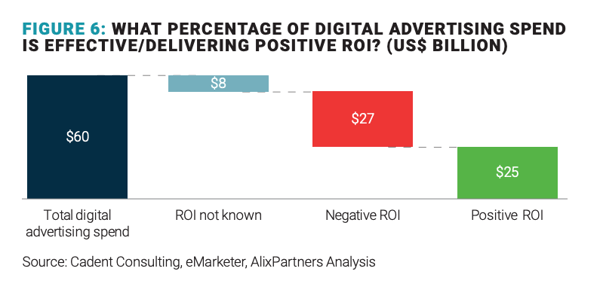Marketing has changed dramatically since John Wanamaker first asked which half of his advertising spend was wasted more than a century ago. Nevertheless his question remains highly relevant in 2019 as Mark Andrews, Senior Digital Consultant at ID Comms, explains.
For all the advances in marketing technology, a lot of time and effort is still expended in identifying wastage.
Digital media was pinned as the solution to this problem, with the ability to hyper-target audiences in their moment of interest and track any resulting actions. Brands flocked to digital advertising with the hope of finding media nirvana.
The truth, however, is different. Digital media is often a source of wastage that goes far beyond Wanamaker’s worst nightmares. Not least because too many marketers dived in head first. They were brave but foolhardy in dismissing the importance of strategic planning and the right safeguarding measures to ensure quality and effectiveness.
The latest study from global consulting firm AlixPartners, which asked 1,110 decision-makers from unnamed FMCG companies across the Europe, US, China and India, estimated that in 2018, 60% of digital marketing failed to deliver any noticeable ROI.
Even if you take these figures with a pinch of salt, it clearly highlights the need for marketers to take action.

Part of the challenge relates to the highly fragmented and complex advertising ecosystem, with many advertisers expressing their frustration in their inability to track and measure outcomes given more complicated marketing models and distribution channels.
Another common concern is in the programmatic supply chain, where a general lack of transparency has allowed many intermediaries to take a cut of advertiser budgets without adding much (or any) value. According to eMarketer research, the ad tech tax now accounts for one-third of spending in programmatic in the US. That’s a big chunk of an advertiser’s budget and it gets even larger when you consider that this excludes agency fees.
Thankfully, action is being taken. Ads.txt and other initiatives have helped to highlight valid traffic and valuable partners. And the buying platforms (DSPs), who, along with the people utilizing their platforms are working closer with the exchanges and SSPs to clean up the supply of inventory and provide more measurement-based solutions.
This positive news aside, there is a need for advertisers to adopt a far wider and a more holistic approach to reducing wastage.
Firstly, advertisers should assess if their current capabilities across data, technology and talent are designed to deliver an effective strategy. It’s critical to understand that decisions taken during media strategy and planning have a large impact on the performance of campaigns.
Secondly, they need to ensure transparency into the value of each component in the media chain. Advertisers should focus on identifying suppliers in their media chain who are either non-transparent and therefore you cannot understand the value, or those who are but provide little ROI.
Lastly, there is a need to evaluate the media buying activity itself, looking into media management, optimisation and measurement, to ensure that the agency or in-house team are delivering effectively against your specific business needs.
Only when advertisers and their partners get this right, can wastage be effectively reduced and confidence restored in digital’s ability to drive business growth.
Embrace these three principles and advertisers can expect to be approximately 70% more efficient in driving positive ROI.




COMMENTS